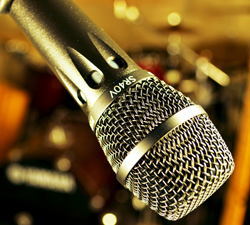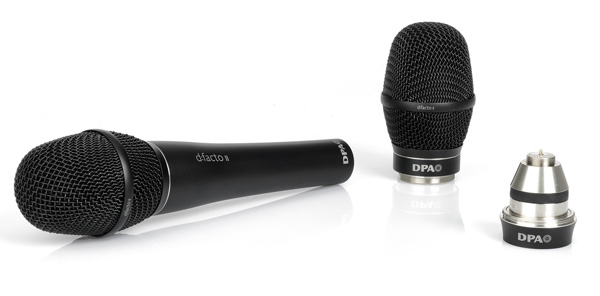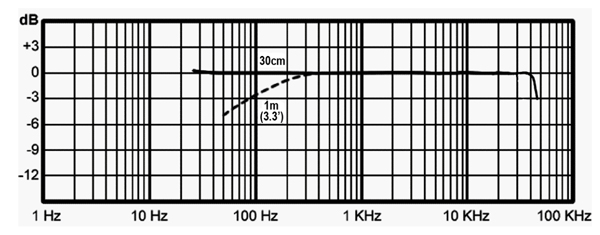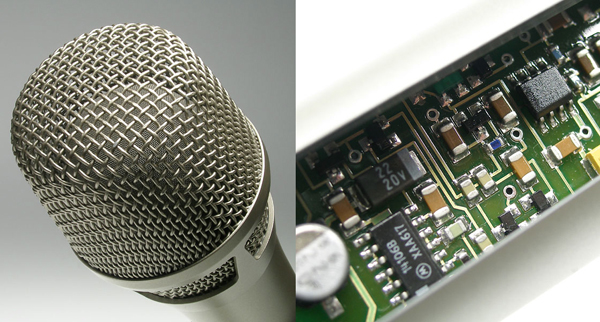Particularly over the past couple decades, meeting the needs for greater freedom and flexibility in live performance has meant that microphone companies have expended considerable effort designing and building the hardware to deliver the output wirelessly. Virtually every mic manufacturer has its own brand of wireless, and these units make up a significant portion of their microphone sales.
Add the ongoing changes in the RF landscape and a voracious demand for spectrum from communications and consumer devices, and the pressure for manufacturers to pour resources into the wireless side of mic development becomes relentless. As an example, within the past three years we’ve seen new digital wireless systems – in some cases several models – from most of the established players.
But what about the microphones themselves? What improvements, technological advances, and innovations are being created within the transducers themselves to allow them to better capture the acoustic sounds of voices and instruments – before they’re delivered to the sound reinforcement system?
Critical Parameters
Mic designers work with a number of key parameters, including the range of frequencies the mic can effectively capture, the flatness of that response over those frequencies, the consistency of the coverage pattern over the relevant frequency range, sensitivity to the nuances of the audio sound, maximum SPL before unacceptable distortion is introduced into the signal, the minimum and maximum distances at which the mic can capture a usable signal, and gain—before-feedback in a live sound reinforcement setting.
Additional critical factors include the electrical noise floor the transducer system produces, resistance to breath and wind noises, attenuation of handling noise and other mechanical vibration, filtering and other internal equalization selections, amount of proximity effect when used closely, and a form factor that lends itself to the desired application. How are manufacturers balancing, varying, and improving these and other parameters?
Frequency Response
The goal is to achieve as flat and even of a frequency response across the desired spectrum – nominally 20 Hz to 20 kHz, yet with desirable variations to benefit certain applications.
Having a vocal mic be sensitive to very low frequencies would do nothing for capturing a voice whose fundamental is more than two octaves above 20 Hz, and would pick up extraneous stage noise and lower frequencies from bass and drums; thus a mechanical, electronic, or combination high-pass filter is useful for vocals.
A “presence peak” to emphasize some of the overtone frequencies produced by consonants aids intelligibility, and is commonly designed in. However, the ideal vocal mic might not have the low-end sensitivity to mic an acoustic bass or kick drum, and a flat response without a presence peak would likely sound more natural on an acoustic guitar or wind instrument.
With today’s sophisticated DSP options available for equalizing the mic’s raw signal, smooth adjustments for both tone quality and intelligibility can be made after the fact – as long as the desired frequencies have been captured by the microphone.
The design goals for several recently introduced vocal mics have included a very flat frequency response across the vocal fundamentals and overtones to yield a neutral, “transparent” sound quality. The Earthworks SR40V and the DPA d:facto II vocal mics emphasize linearity in their frequency response, and both companies’ background in creating measurement mics for acoustic engineering and system optimization applications contribute to this trait.
Earthworks mics capture frequencies up to 40 kHz, according to Daniel Blackmer, because “the ear is highly sensitive to phase and time differences to localize a sound source and perceive it as ‘live’.”
On the other hand, DPA doesn’t emphasize these highest frequencies, yet within the full vocal range its frequency response stays within +/-2 dB.
The supercardioid Neumann KMS 105 and Shure KSM9 are also vocal condensers that exhibit a relatively flat, natural frequency response. Neumann varied the KMS 104-plus cardioid vocal mic specifically for female vocal in the pop and rock genres, with “a more extended bass frequency response.”























